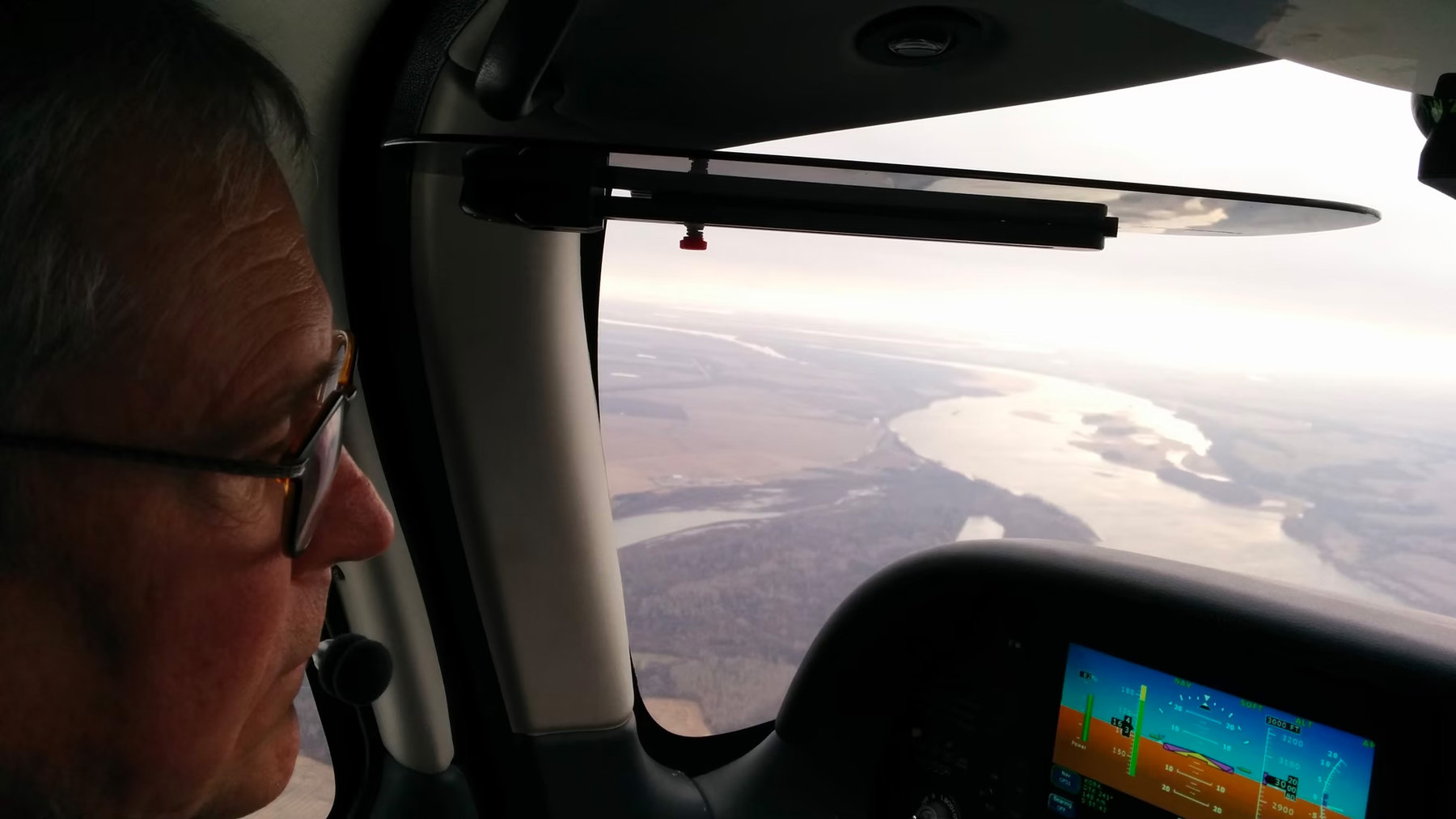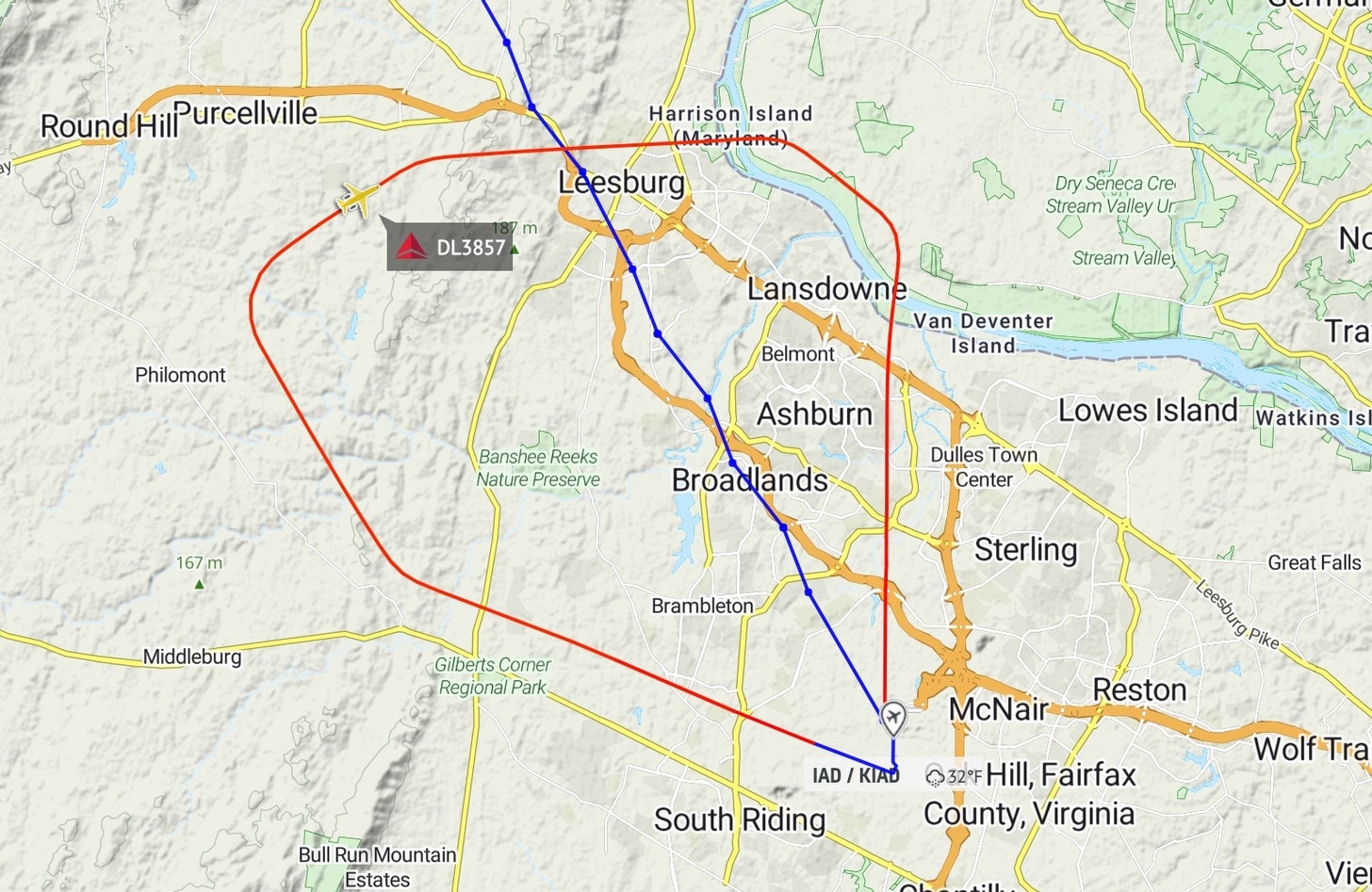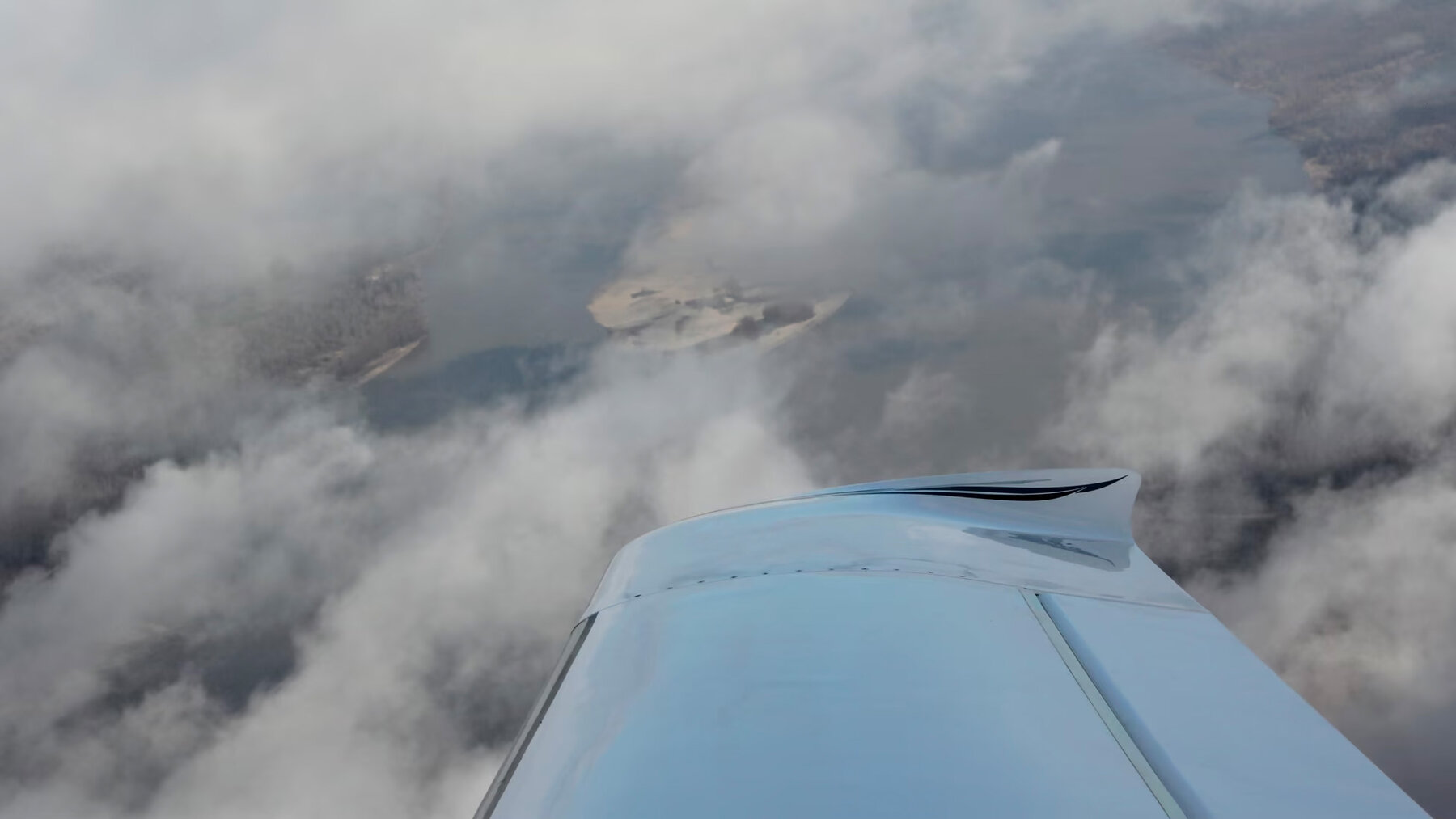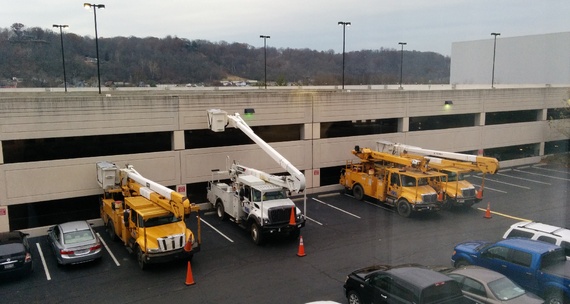
We were expecting an uneventful flying day, destination Little Rock about 650 miles away. But nothing is ever uneventful about flying in a small plane. It is rarely scary, but also rarely without something unusual with weather, or topography, or clouds, or mechanics, or overheard Air Traffic Control transmissions. The first that day was about mechanics.
Our little plane’s dashboard is filled with all kinds of electronic reporting systems, as well as multiple backup and double-check measurements. We noticed one of the 6 pistons reading hotter than all the others, which probably indicated a spark plug having some trouble. (Jim informs me that this was only one of the two heat readings: Exhaust Gas Temperature, as opposed to the more important Cylinder Head Temperature, and that it showed up only when he had set the engine on the gas-saving “lean of peak” setting. All of which suggested a spark plug issue.) This wasn’t drastic by any means, but we decided we should try to get it looked at before the next day’s Thanksgiving holiday. With real-time info showing up on our iPad via a program called ForeFlight, we looked through possible small airports and decided to stop to refuel and hope for a mechanic in Murray KY.

The small airport (FBO for fixed base operator) lent us their “crew car” for the quick drive into Murray. The crew car is one of my favorite features of small plane flying. FBOs often provide them for transient fliers like us to borrow for a few hours for lunch or a look-see around town. Surprisingly often, the cars are rambling old Crown Vics, likely hand-me-downs from the sheriff’s department to the country airports. We were not disappointed! Here was an old white Crown Vic, complete with giant moveable spotlight fixed by the driver’s rearview window.
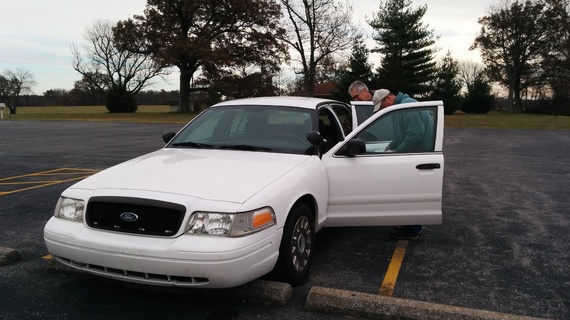
So off we drove to find Rudy’s, on Murray’s downtown court square. Rudy’s opened about 80 years ago, making it one of the earliest eating places in Murray, where it remains an anchor in town. It just escaped the early morning blaze last July, which destroyed several buildings along the square.
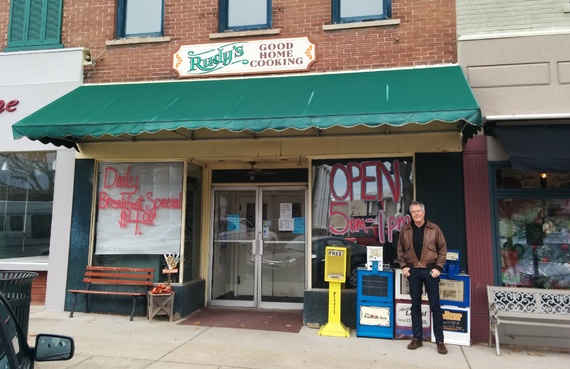
We had some all-day-breakfast omelets for lunch and chatted with the servers who showed us photos of Rudy’s then, much like Rudy’s now.
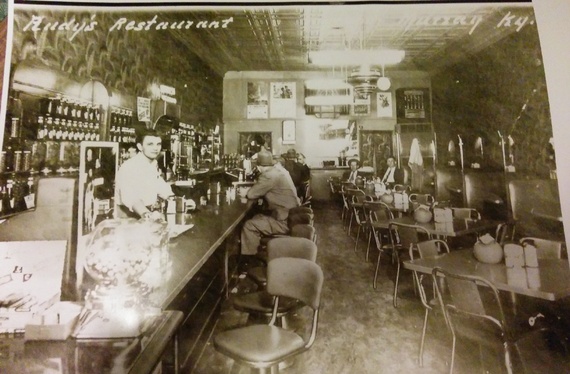
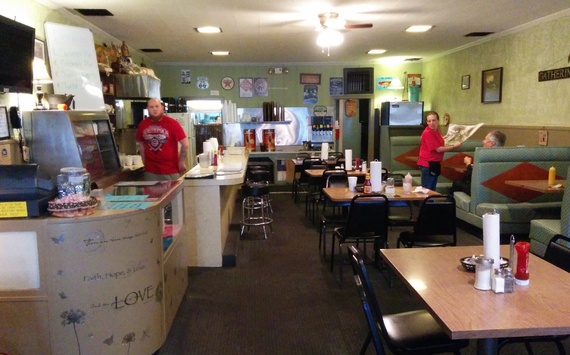
On to Little Rock. The plane felt sprightly with its new spark plug. The weather reports, which Jim spends all his time checking whenever we’re on the ground, were good. Skies were clear, so we planned a “visual flight rules” route direct to Little Rock at 2,500 feet — high enough to be comfortably above the ground in the flatlands on either side of the Mississippi, low enough to be well clear of the clouds and have the close-up view I always prefer of the changing landscape.
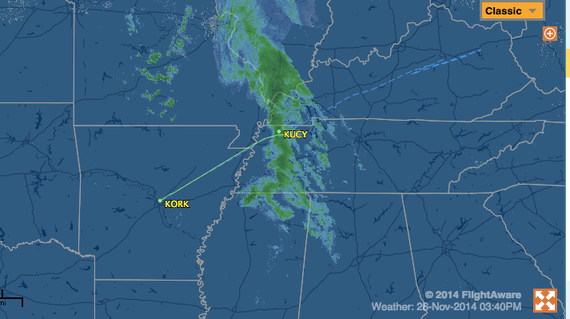
The dotted blue line shows where the traffic controllers were tracking us via “flight following” on the earlier leg from West Virginia. Right near the U in KUCY (the air-traffic term for a nearby airport) is where we began the instrument-plan flight into the clouds, which are in green. We came out of them where the green cloud-band ends and went on to KORK, which is North Little Rock airport.
While we were in the clouds, Jim divided his attention between keeping the plane on course and altitude, and obsessively watching the temperature. It had been +4 degrees C when we were flying visually at 2,500 feet. It was +3C when we went up to 3,000 feet to begin the instrument plan. (Instrument flights are at thousand-foot increments, like 3,000 or 5,000. Visual flights are usually on the 500s). Then it went down to +2C and sometimes bounced to +1. (The air generally gets colder the higher you go.) What you absolutely do not want inside a cloud is temperatures at or around freezing, or 0 degrees C, because that means the risk of “airframe icing,” which can cover the wings of the plane with ice and keep it from flying.
We turned on the anti-icing system of the plane, which sends a kind of antifreeze out through tiny pores on the wings and tail. Jim looked every two seconds at the wings of the plane — and I actually never stopped looking — to see the first signs of ice, which never appeared. (If they had, we would have asked controllers for the nearest place to land and wait things out.) Then after what was only about ten minutes inside the clouds, but seemed like an hour, we came through the western edge of them and saw clear sky ahead of us all the way ahead.
At this point Jim happily “cancelled IFR” with the controllers, and we went back down to 2,500 feet and cruised on for the rest of the trip.
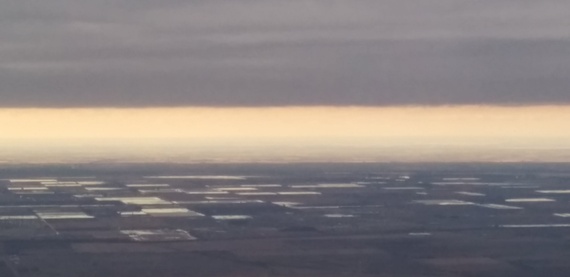
We landed in the small North Little Rock airport mid-afternoon. Once again, the friendly FBO lent us their crew car. This time for overnight! The FBO team turned over the keys. With a set of instructions: Shiny key for ignition. Dull key for side locks and trunk. Slam trunk extremely hard, to hear latch catch, or light will remain on and drain battery. Engage turn signal to off manually, or it won’t go off…

We lurched on down to Little Rock. To our great delight, we enjoyed dinner with Bill Whitworth and his daughter, Katherine. Bill was the editor of The Atlantic during the 1980s and 90s. He took over that position one year after Jim joined the magazine, and was his formative and beloved editor for many, many years.
This was a wonderful way to end Day 2 of our cross-country trip.

